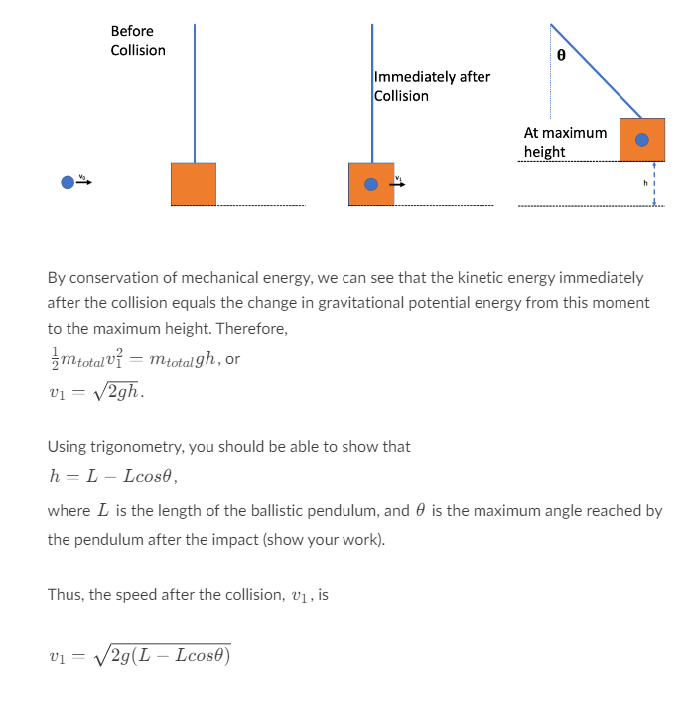Before Collision Immediately after Collision By conservation of mechanical energy, we can see that the kinetic energy immediately after the collision equals the change in gravitational potential energy from this moment to the maximum height. Therefore, mtotal= mtotalgh, or v₁ = √2gh. Using trigonometry, you should be able to show that h = L - Lcose, Thus, the speed after the collision, v₁, is At maximum height where I is the length of the ballistic pendulum, and is the maximum angle reached by the pendulum after the impact (show your work). v₁ = √√2g(L Lcose)
We can use conservation of momentum principles to compare the velocity of the marble before the collision to the velocity of the pendulum bob (with embedded marble) after the collision. After the collision, we can use conservation of energy principles to compare the initial kinetic energy of the (marble + pendulum) system with its potential energy when the pendulum reaches a maximum swing angle.
Analyze the problem "backwards." Start with the motion of the (marble + pendulum) system after the inelastic collision. Using conservation of mechanical energy, derive an expression for the initial velocity of the marble + pendulum system as it starts to move.
.
Using trigonometry, you should be able to show that
,
where is the length of the ballistic pendulum, and is the maximum angle reached by the pendulum after the impact (show your work).
Thus, the speed after the collision, , is

Trending now
This is a popular solution!
Step by step
Solved in 3 steps with 3 images




